-
Membership
Membership
Anyone with an interest in the history of the built environment is welcome to join the Society of Architectural Historians -
Conferences
Conferences
SAH Annual International Conferences bring members together for scholarly exchange and networking -
Publications
Publications
Through print and digital publications, SAH documents the history of the built environment and disseminates scholarship -
Programs
Programs
SAH promotes meaningful engagement with the history of the built environment through its programsMember Programs
-
Jobs & Opportunities
Jobs & Opportunities
SAH provides resources, fellowships, and grants to help further your career and professional life -
Support
Support
We invite you to support the educational mission of SAH by making a gift, becoming a member, or volunteering -
About
About
SAH promotes the study, interpretation, and conservation of the built environment worldwide for the benefit of all
SAH Archipedia Highlights: Jewish American Heritage Month
May 11, 2021
by
Catherine Boland Erkkila, BUS/SAH Archipedia Managing Editor
In recognition of Jewish American Heritage Month, we are featuring a small selection of the synagogues included in SAH Archipedia.
Gumenick Chapel
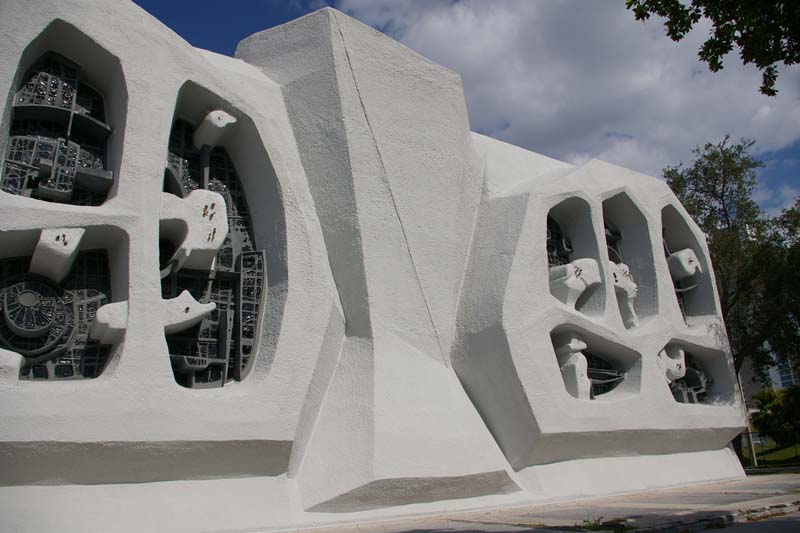
Photograph by David Rifkind
The Gumenick Chapel is a 1960s addition to Temple Israel’s majestic Byzantine Revival building (1927, Robertson and Patterson) in Miami Beach, which was completed five years after the congregation’s founding. The chapel was built during a time when the synagogue’s congregation was growing rapidly. Under Rabbi Joseph Narot, the community grew to 1,800 families and High Holy Day ceremonies were so large that the congregation rented the Miami Beach Convention Center. During this time, the synagogue was also actively engaged in social justice issues, including the civil rights movement, and the new chapel was seen as embodying the values of this dynamic congregation.
Eldridge Street Synagogue
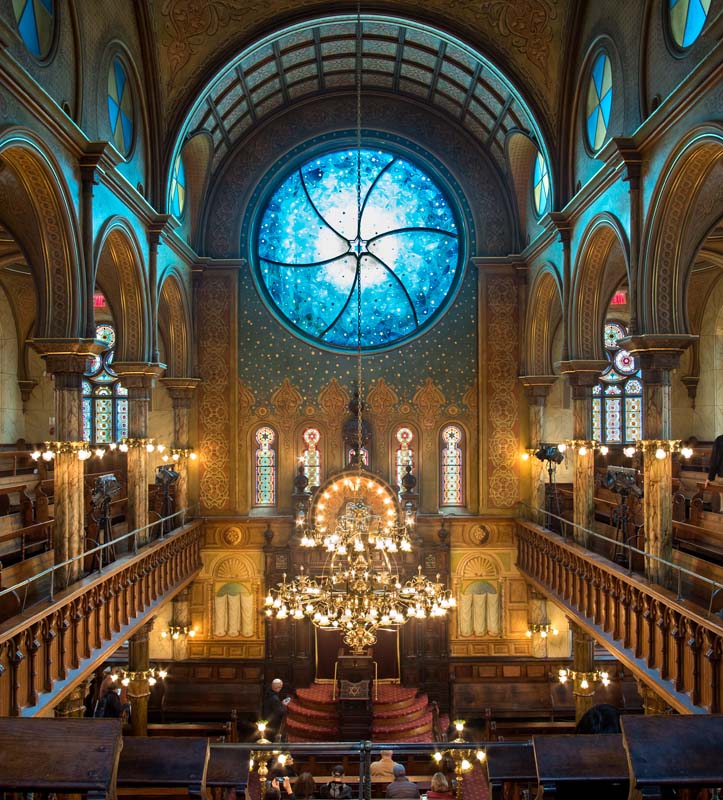
Photograph by Rhododendrites, CC BY SA-4.0
The unique architecture of the Eldridge Street Synagogue is matched by its complex history. It was erected on the Lower East Side of Manhattan at a time when the densely built neighborhood was New York City’s most crowded immigrant district. The building features Moorish, Gothic, and Romanesque elements, an eclectic fusion of architectural styles popular for synagogues in both the United States and Europe during the late nineteenth and early twentieth centuries. The restored structure is now a museum, and the neighborhood is largely occupied by Chinese, rather than Jewish, immigrants.
Anshe Emeth Beth Tefilo Synagogue
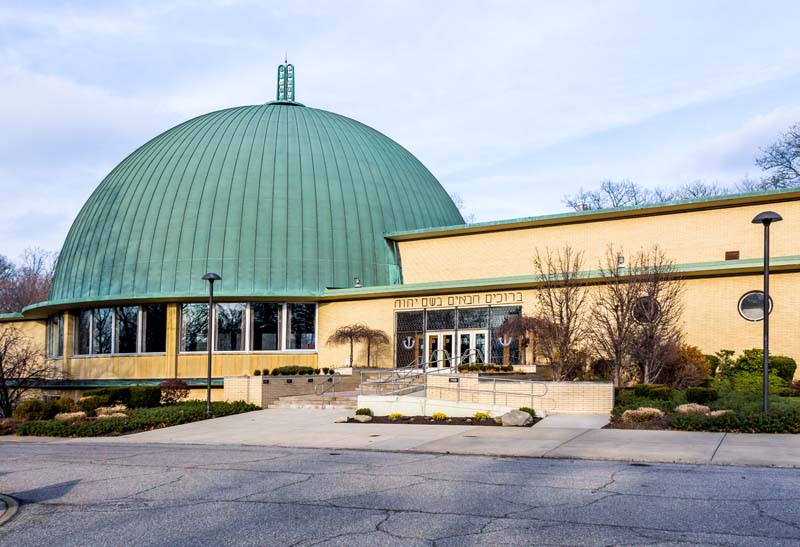
Photograph by Richard W. Burry – Volunteer Photography Group
This major work of twentieth-century religious architecture in Cleveland Heights, Ohio, was built by German Jewish modernist architect Erich Mendelsohn. Built in 1945–1950, the Anshe Emeth Beth Tefilo Synagogue (Park Synagogue) was one of Mendelsohn’s last major projects, and he designed the interior furniture and finishes as well. At the dedication Mendelsohn noted, “On American soil, the Park Synagogue is an attempt to express what is eternal and beautiful in Judaism to the American Jew in the year nineteen hundred and fifty.”
North Shore Congregation Israel
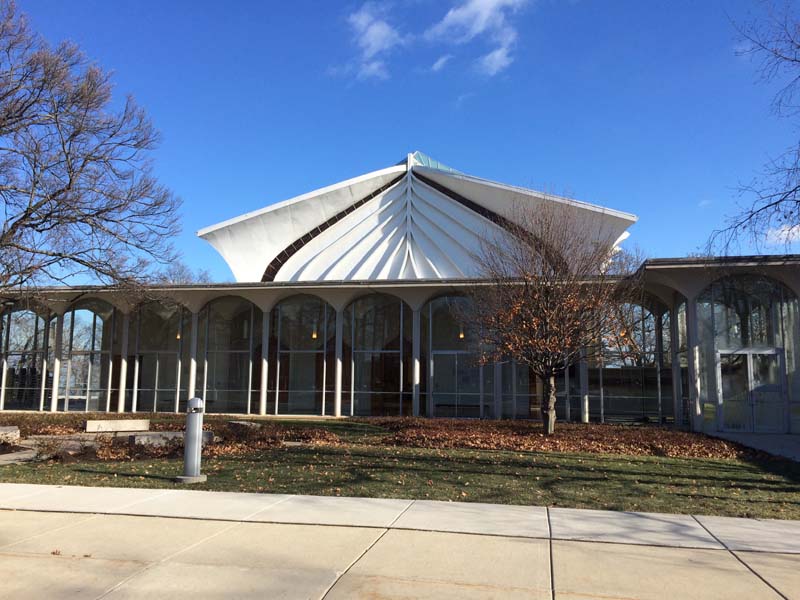
Photograph by Elizabeth Milnarik
North Shore Congregation Israel is the oldest Jewish community on Chicago’s North Shore, the narrow band of suburban communities along Lake Michigan north of the city. Located in Glencoe, near country clubs, forest preserves, and grand residences, the synagogue is set on the bluffs overlooking Lake Michigan. The design embodies architect Minoru Yamasaki’s New Formalist vision: its monumental, reinforced concrete vaults simultaneously evoke Gothic structural forms, while its materials and detailing are clearly modern.
Temple Adath Israel
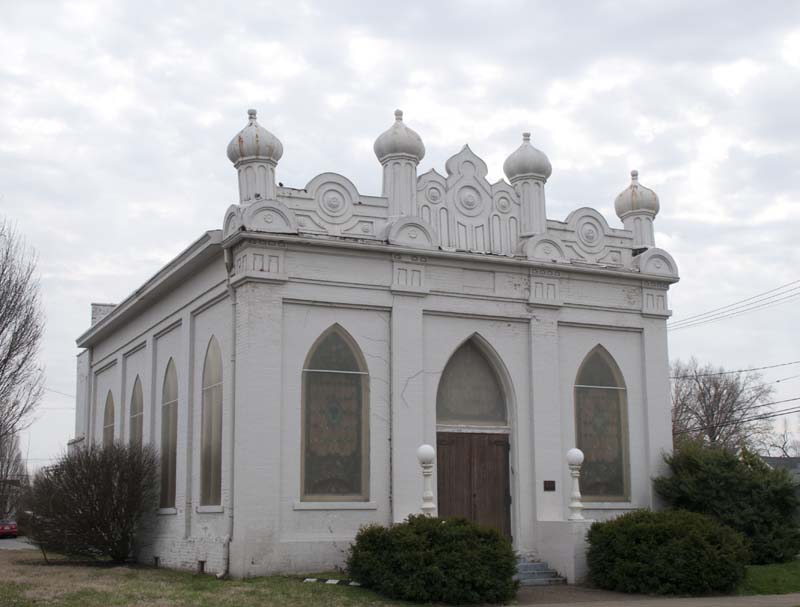
Photograph by Mitch Eckert
Temple Adath Israel is an exuberant and eclectic mix of Gothic and Moorish revivals. Built in 1877–1878, this diminutive structure is an example of the architectural fashion for Moorish-inspired synagogues then popular in both the United States and Europe. The Jewish community settled in Owensboro, an important trade hub along the Ohio River, before the Civil War. A number of Owensboro’s Jewish citizens had emigrated from Central Europe, which may explain why the congregation chose this particular style for the synagogue's facade.


